Recently, I stumbled upon the paper “Nothing is Written — Learning is an Adventure” by Johnnie Moore & Viv McWaters. I loved every part of it and felt myself nodding in agreement continuously. When it comes to training & teaching, I fully agree with statements like…
“Rather than giving people reassuring — right answers — we may do better to model experimentation, curiosity, and openness.”
and…
“For insights to be useful, they need to be generated from within, not given to individuals as conclusions.”
and…
“Trainers should drop their masks of expertise and reveal their vulnerability.”
Although the paper is focused on training in general, my mind made the connection in how Scrum consultants, trainers, and coaches try to have organizations learn Scrum. Or the other way around. How organizations expect to succeed with Scrum by hiring consultants, trainers, and coaches.
What I see happening a lot is…
- Scrum consultants are hired as experts to implement the Scrum framework in the wider organization;
- Scrum trainers are expected to provide the students (employees from the organizations adopting Scrum) with all the answers & solutions for their daily challenges;
- Scrum coaches are judged by how quickly they get everyone more mature in using Scrum, and its related collaboration, and interactions.
Being a consultant, trainer or coach (sometimes the same person) isn’t necessarily wrong. The problem is the expectations organizations often have from these roles and how the consultants, trainers, and coaches choose to fulfill it.
Complexity
Scrum is built on the observation that within a complex environment and/or doing complex work, an empirical process offers the best chance of success. In complexity, better insights and ideas emerge as we’re doing the work. This makes even the near future difficult to predict. Scrum provides a lightweight framework for allowing this learning to happen as quickly as possible without losing the focus needed when solving complex problems.
People tend to think you can reduce complexity by doing lots of thinking and analysis. This is a wrong assumption. In complex environments, it’s unknown what will happen. Only previous results are a fact and can inform us about possible next steps.

Complexity & Scrum in a nutshell — The Liberators, click here for a high resolution version
The problem
Most likely, at the start of every Scrum kick-off or Scrum training, complexity and its consequences will be explained by using models like Stacey or Cynefin. Often, everyone agrees with its key takeaway that with complexity the unknown exceeds the known and an introduction of Scrum can be considered a complex endeavor as well.
Therefore, what strikes me the most is that…
- Organizations continue to select large consultancy firms with ‘Scrum experts’ to lead their Scrum transformation. The most detailed transformation plan has the highest chance of being selected;
- Scrum coaches continue to use fancy maturity models in which growth is a linear progression through a number of discrete phases. The expected growth looks the same across organizations, teams, and individuals;
- Trainers continue to share ‘best practices’ — like Story Points and User Stories — in their classes, while they also start their classes explaining models like Stacey or Cynefin;
- Students continue to attend classes with a core focus on providing answers to questions from the related assessment, with the only goal of getting everyone certified.
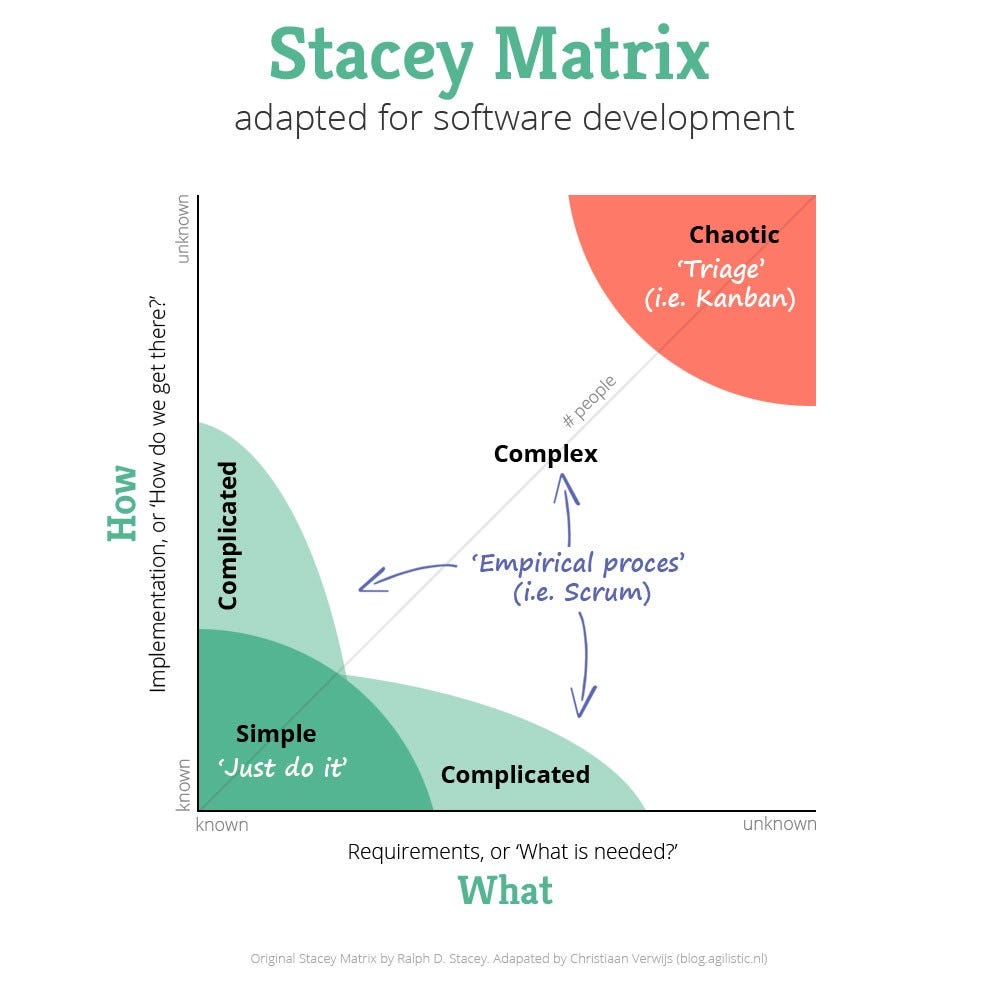
The problem is that most likely…
- Organizations will not succeed with Scrum because the detailed transformation plan wasn’t capable of dealing with the unpredictable, unexpected dynamics around products, processes, and people;
- The organization’s reality proved to be far messier than the maturity model. The Scrum Teams didn’t grow linear and therefore didn’t fit in the anticipated maturity path (check this article for more details about maturity models);
- Trainers will get feedback from students that their ‘best practices’ didn’t work in their context and environment;
- Students might have passed the assessment, but failed to put everything into practice. The best practices the trainer provided didn’t work. Experimenting with other practices was difficult because they lacked a solid understanding of the underlying principles & values.
It’s time to acknowledge that…
My hope is that organizations, trainers and, students finally start acknowledging that…
- There isn’t a silver bullet to implement Scrum;
- A detailed Scrum transformation plan in itself is already a contradiction;
- Maturity models are snack food: they look appealing at first glance and seems to hit the spot when you consume it, but don’t offer anything healthy at all;
- You don’t need tons of Scrum coaches if you want to succeed with Scrum;
- Training shouldn’t be about providing ‘best practices’ to the complex challenges the students are facing.
Three initiatives
To help shift this, focus on silver bullets to implement Scrum, classes full of best practices, maturity models, and unrealistic expectations of/by Scrum coaches, we (The Liberators) are involved in three initiatives:
- The design and maintenance of the Scrum.org PSM II class
- The creation and facilitation of the public Scrum Master Learning Journey
- The start and support of the Dutch Liberating Structures user group
Let’s explore these initiatives in more detail.
The Professional Scrum Master II class
“We are not the experts!”
That’s one of the first statements Christiaan Verwijs and I make at the start of the Scrum.org PSM II class. Within complexity, sharing experiences is useful, relying on one's expertise is a pitfall. The PSM II class was designed to be “by Scrum Masters for Scrum Masters”. The focus lies on facilitation, on creating transparency and on discovering local solutions together.
The class invites trainers to model appropriate behaviors and practices of a Scrum Master, like:
- Use techniques and practices to make challenges transparent
- Don’t provide “simple answers” to complex problems, but inviting the group to discover their own solutions;
- Ask open-ended questions wherever possible to support the process of discovery;
- Approach teaching as “the art of assisted discovery” rather than “presenting the facts”;
- Facilitate bottom-up knowledge creation and to help students to think within the Scrum framework.
Most important, Scrum Masters are servant leaders. They help the Scrum Team be successful by providing the services and support they need to do so, without drawing attention to themselves. Their approach to change is holistic and involves the individual members, the team, and the broader organization. They recognize that in complex work, bringing people together and shaping future actions together is the best way to be effective.
“In complex work, bringing people together and shaping future actions together is the best way to be effective.”
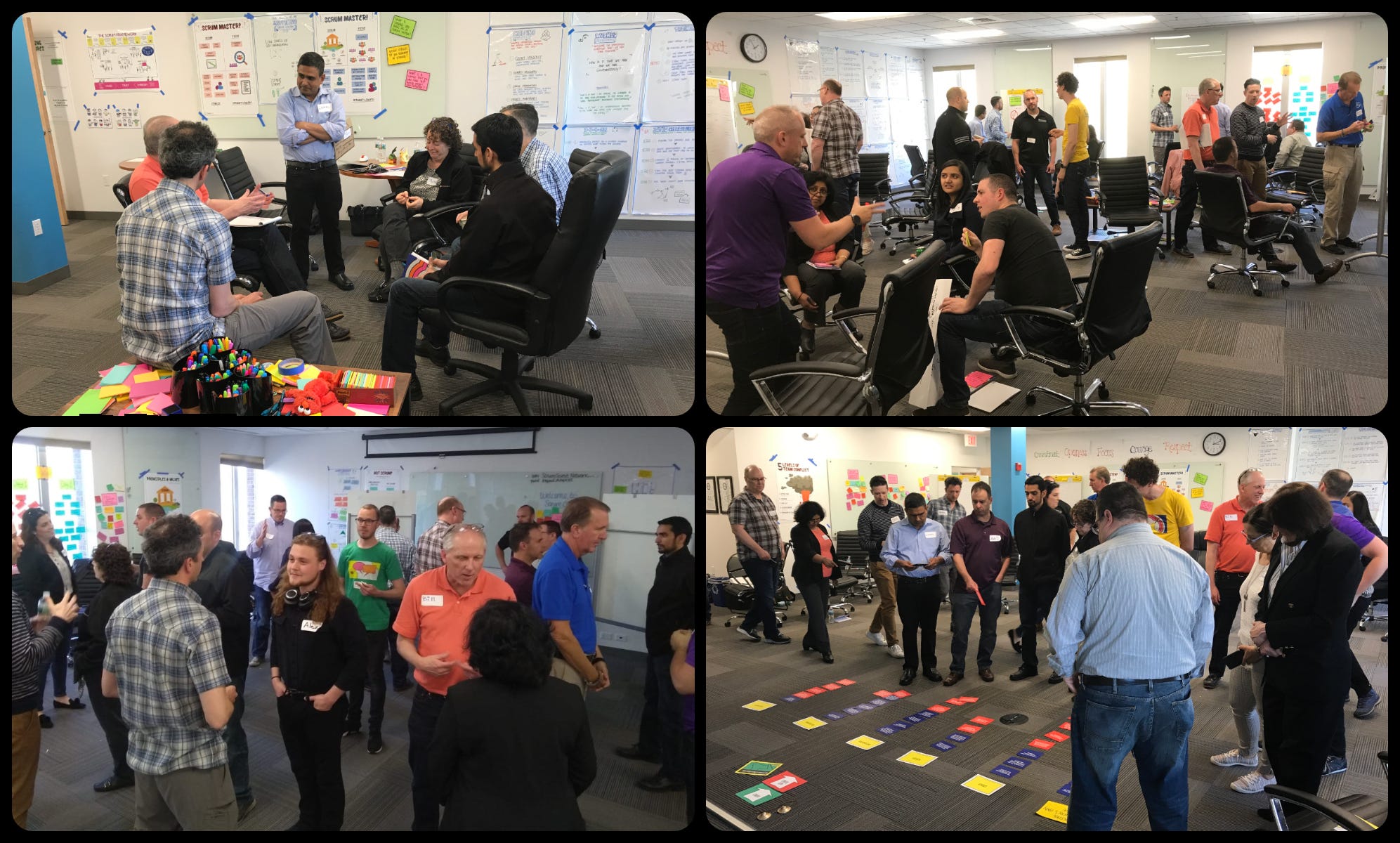
PSM II class in Boston at Scrum.org
The Scrum Master Learning Journey
Scrum Masters are responsible for helping organizations find ways to deliver value to stakeholders faster and more frequently with Scrum. This is no simple task and requires creativity, intelligence and close collaboration with developers, product owners, and management.
We believe that Scrum Masters make a bigger impact when they work together with Scrum Masters from inside and outside their organization. Working together, Scrum Masters have the creativity, intelligence, and wisdom to overcome the many hard challenges that they face in helping organizations work effectively with Scrum.
Recognizing this challenge, we’re going to start the public Scrum Master Learning Journey where Scrum Masters can learn and grow together with Scrum Masters from many other organizations. We’ve experienced how powerful communities of Scrum Masters are in driving successful Scrum, and want to offer every Scrum Master the same opportunity!
Therefore, let’s grow a community of Scrum Masters focused on learning & sharing experiences and finding novel solutions to persistent challenges. A community that offers opportunities for deepening skills, developing strategies and learning new techniques.
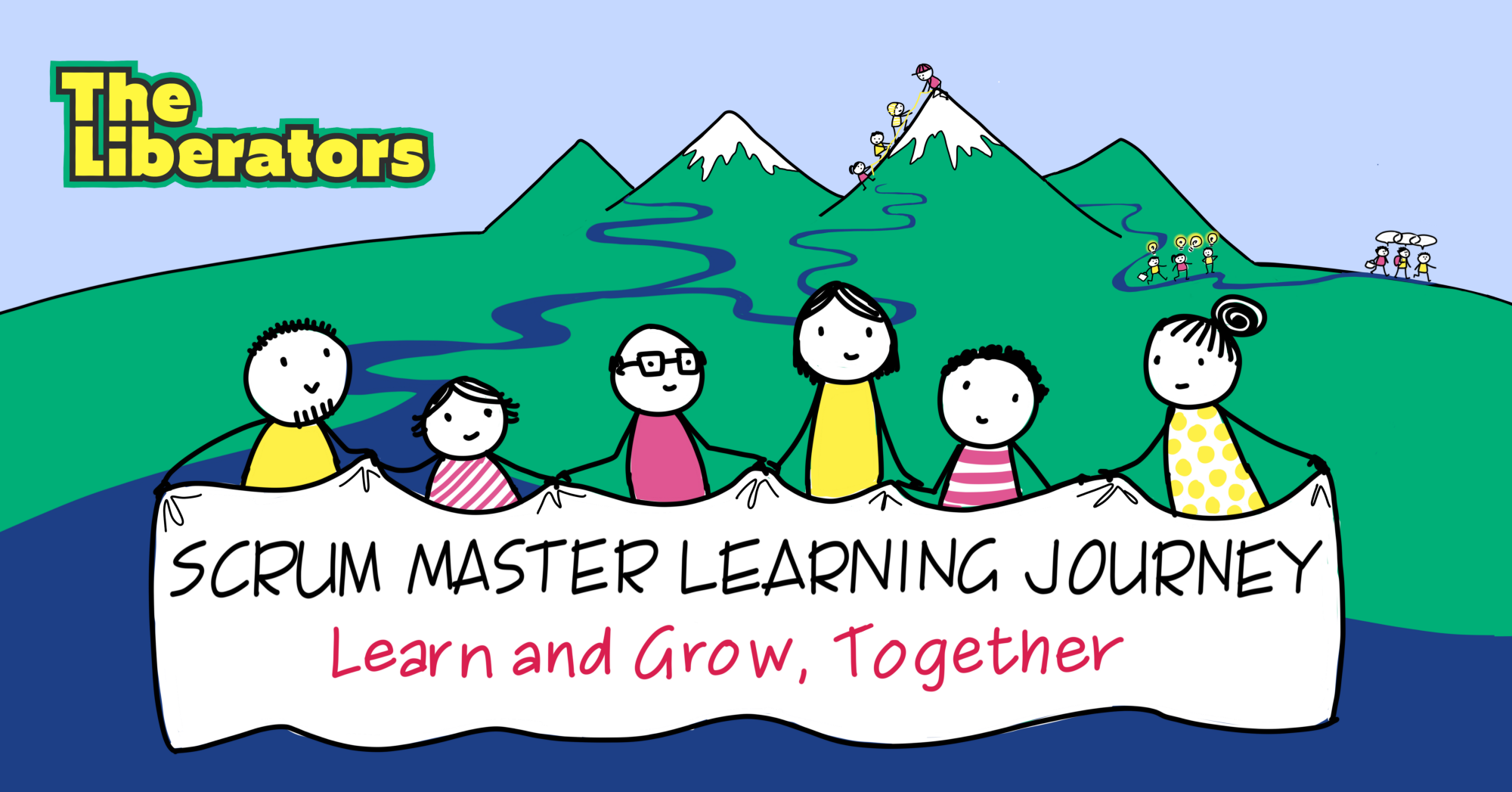
Scrum Masters, let's go on a journey, together! (illustration by Thea Schukken)
Liberating Structures
Liberating Structures are a collection of 30+ interaction patterns that unflatten, enrich and deepen interactions in groups. With strong roots in complexity science, and collected by Keith McCandless and Henri Lipmanowicz, all Liberating Structures implement five design elements and ten principles. This means that Liberating Structures are not a rigid, static set of formats. New structures are being developed all the time and existing structures are modified, adjusted or removed. With Liberating Structures, it’s possible to start shifting entire organizations by tweaking the way groups and individuals interact.
We use Liberating Structures extensively because of their strong focus on minimal structure, the emergence of ideas and self-organization, this makes it a natural fit with Scrum.
“The strong focus on minimal structure, the emergence of ideas and self-organization, makes Liberating Structures a natural fit with Scrum.”
In 2018 we started the Dutch Liberating Structures user group. The purpose of this group is to practice and explore how to use Liberating Structures in a wide variety of situations. Currently, the user group has already 1000+ members!
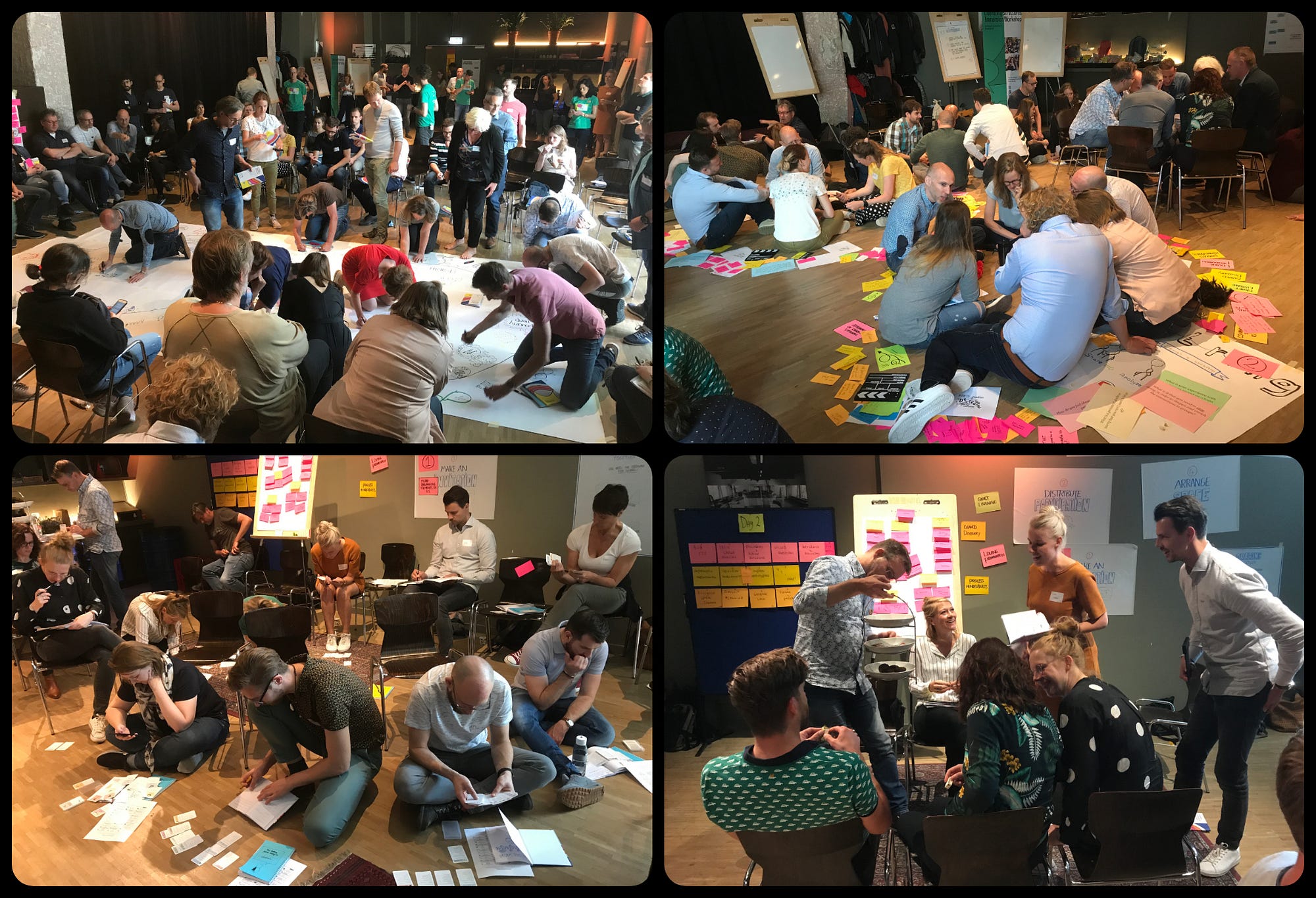
Pictures of a Liberating Structures Gathering in Amsterdam
What these three initiatives have in common
Now you might wonder: what do the PSM II class, Scrum Master Learning Journey and Liberating Structures have in common?
The answer is pretty simple and straightforward: they are all expert-less!
The intention of the PSM II class is to build on the combined experience of the group, rather than having trainers providing the ‘right answers’.
The purpose of the Scrum Master Learning Journey is to learn and grow, together. Without measuring progress by using maturity models. Without Scrum coaches that haven’t fulfilled the role themselves yet recommend their ‘best practices’. The idea is to grow a community with a lot of expertise, but without any experts…
“Let’s grow a community with expertise, but without experts.”
One of the key principles of Liberating Structures itself is that they are expert-less. Everyone can use Liberating Structures and succeed after the first experience. You don’t need a personal coach for using Liberating Structures. Just start using them, share your insights and learnings with the community, and give & get help.
Why it’s mostly about the Scrum Master
So far, this article is mostly about the Scrum Master because (s)he is in a perfect position to move the organization towards an environment where Scrum can thrive. They see what is happening in the most fundamental units of work — the Scrum Teams — on a daily basis. Being part of a Scrum Team, the Scrum Master knows precisely what needs to be changed. The Scrum Master can facilitate conversations and collaboration with other Scrum Teams. Together with other Scrum Masters (s)he can ignite the necessary organizational changes by influencing the system from the inside out.
A Scrum adoption will be more successful when Scrum Masters are encouraged to work together and build on their observations. Together, they can drive change from the ‘Inside-out’. It is natural to focus on the team level initially, but the focus will later shift towards building relationships and acting as a change agent on an organizational level.
If Scrum Master are encouraged to fulfill the role like this, you don’t need to rely on the earlier mentioned trainers, consultants, and coaches, fulfilling their role as the Scrum experts. Of course, they will struggle. But that’s the entire purpose of the Scrum Master community. Learn and grow, together!
“A Scrum adoption will be more successful when Scrum Masters are encouraged to work together and build on their observations.”
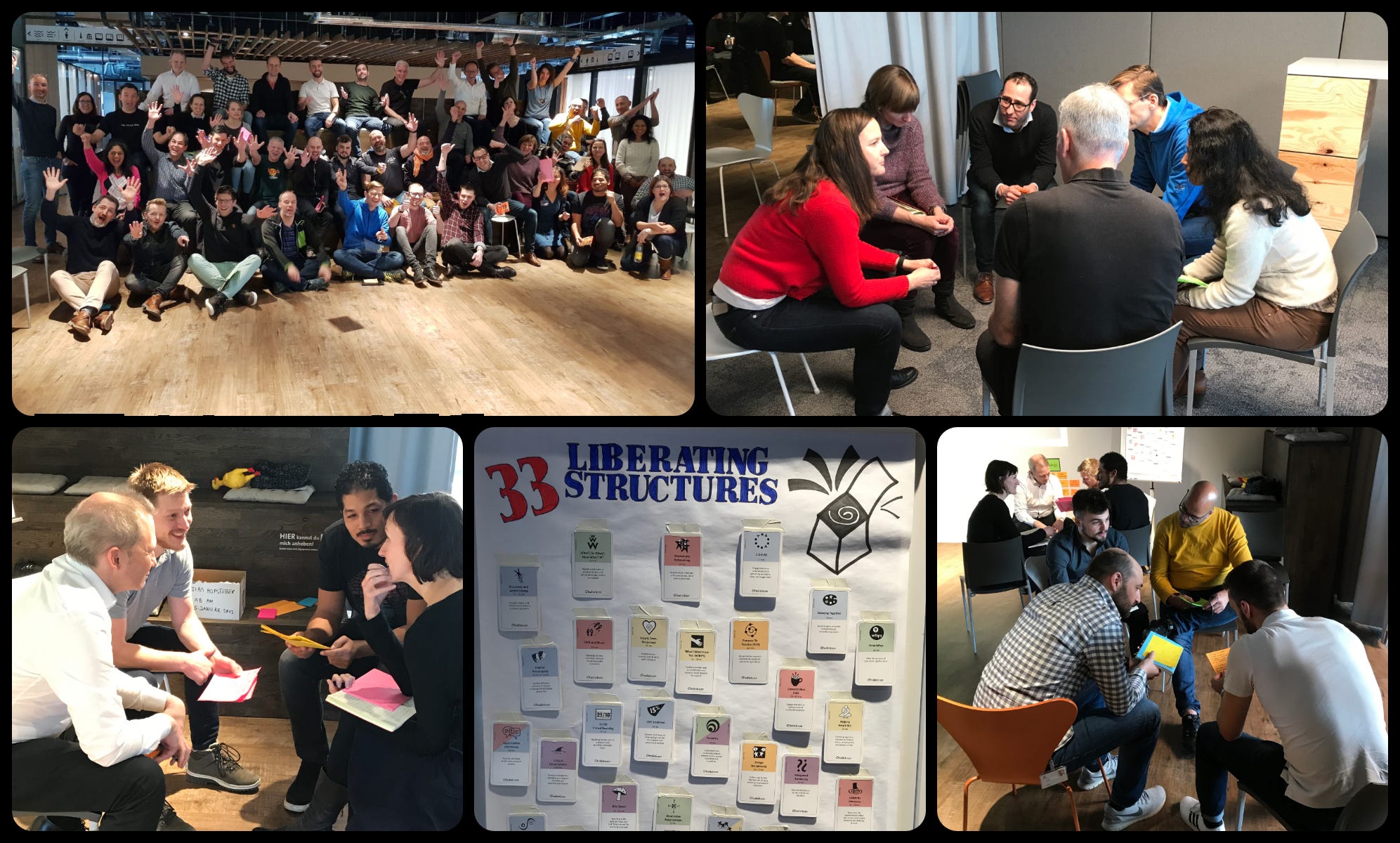
Scrum Masters of Swisscom & KPN sharing experiences and challenges
Why it‘s not ONLY about the Scrum Master
Scrum Masters are a vital part of The Liberators network. However, our purpose is unleashing organizational superpowers and liberating organizations from outdated modes of working and learning. In order to achieve this purpose, we need the support of e.g. Developers, Product Owners, and Managers as well.
Therefore, it would be awesome if…
- All classes are focused on bottom-up knowledge creation and the discovery of local solutions. Bringing people together and help them shape future actions is the best way to be effective. Regardless if you are a Scrum Master, Product Owner, Developer or Manager;
- Tailor-made Scrum learning journeys are designed by Product Owners, Developers, and Managers to share experiences and find solutions to persistent challenges;
- Liberating Structures are used to tap into the full wisdom, experience, and perspectives of everyone in the organization to resolve problems, make decisions, share knowledge and innovate. By using Liberating Structures all voices are heard. This can help create the necessary understanding & support of why & how Scrum is used in an organization.
- Learning 3.0 gets more traction as an approach for emergent learning over prescriptive learning. The whole idea is that learning is best done by people acquiring ideas from various sources, running experiments in their own context, and then sharing insights with their peers. It’s about creating your own knowledge, by gathering, experimenting, and sharing;
- Lean Change Management (LCM) is applied as a non-linear, feedback-driven model for managing change. It’s all about incrementally changing organizations in a highly transparent and collaborative manner. Instead of a first-time-right, blueprint driven approach, the focus is on experimentation and trying out different things to learn what works. LCM can be used perfectly for introducing Scrum in an organization;
- Training from the Back of the Room (TFBR) is used to let students take center-stage as they discuss, questions, reflect, experiment, participate, present, practice, teach, and learn from each other. It would be great if all Scrum classes would have TFBR as the backbone for collaboration & communication.
In this video, participants of the Professional Scrum Master II class explore what it means to say that ‘a Scrum Master is a Change Agent’. One way to do this is to act like the ‘Expert’ and tell your participants. We prefer another approach, called a ‘Teachback’.
Closing
We believe in a radical, expert-less, community-driven approach for organizational change, training, and learning. We are convinced that people should be empowered to drive change themselves and tackle difficult challenges together, as part of a community, while also having fun.
These ideas are inspired by the fields of complexity science and organizational psychology. Concepts and frameworks that support this expert-less approach for organizational change, training, and learning are Learning Journeys, Liberating Structures, Learning 3.0, Lean Change Management, and Training from the Back of the Room. All these concepts enable a strong focus on transparency, an experiential approach and creating a shared purpose.
Most importantly, Scrum itself as a framework is an expert-less approach as well. Meaning, you don’t need experts to tell you what & how to use it. Join the Scrum community, use the earlier mentioned concepts & ideas, share learnings & findings and enjoy the ride!
“We believe in a radical, expert-less, community-driven approach for organizational change, training, and learning.”
By using an expert-less, community-driven approach, organizations are put in a position to thrive on complexity rather than being defeated by it. All without the dependency on Scrum experts but with the support of a strong community!
Interested in learning more about the Scrum.org PSM II class, Scrum Master Learning Journey or Liberating Structures? Check out our agenda for upcoming events. Or join the Liberating Structures user group or The Liberators Network.

See how you can support us at patreon.com/liberators
